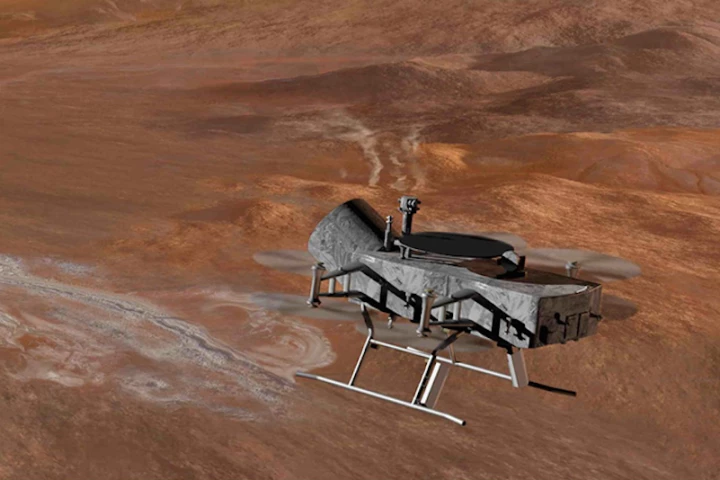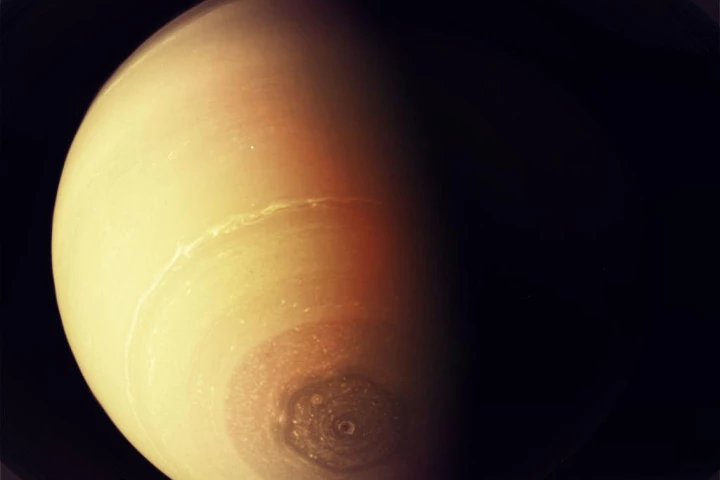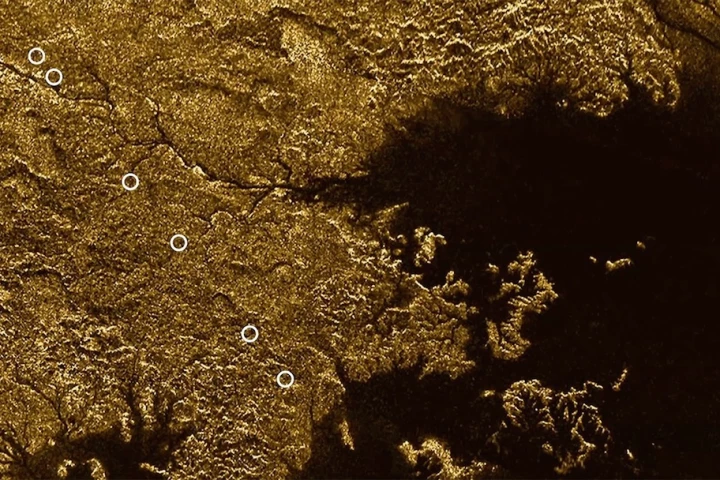Titan
-
With drones taking over a multitude of tasks here on Earth, it was only a matter of time before we started sending them to other worlds. Now a team has developed a concept mission called Dragonfly proposing a dual-quadcopter that could embark upon multiple missions on Saturn’s largest moon Titan.
-
NASA scientists have detected a key ingredient for life that they say could form membrane like-structures on Titan, Saturn's largest moon, providing a new clue in the search for life elsewhere in the solar system.
-
After 13 years of exciting discoveries, NASA's Cassini spacecraft is making its final orbits of Saturn. On September 15 it will commence its mission-ending plunge into the thick atmosphere of the gas giant, but recent observations are proving that Cassini still has some surprises in store.
-
Titan may be home to electric sand that rolls around in the wind and forms clumps that cling together for long periods of time, making Saturn's largest moon the best place in the Solar System to build sand castles.
-
Through laboratory experiments and data from the space agency's unmanned Cassini deep-space probe, a team of scientists at NASA have recreated the conditions on the surface of Titan and have found that its lakes and seas may periodically burst with bubbles like a cosmic soda can.
-
Vaporless clouds have been spotted on Saturn's moon Titan for the second time. A new theory says that a process involving solid state chemistry might be involved in producing the unlikely formations.
-
Nissan just released the Titan XD in its gasoline format to the public, and we got a chance to go hands-on with this huge pickup truck. After driving it both on and off the road, we found that it has qualities its diesel stablemate is missing.
-
A new study has zeroed in on the root-like network of channels that crisscross the surface of Titan, and found the first direct evidence that those canyons – some as deep as 1,870 ft (570 m) – are flooded with liquid hydrocarbons.
-
With oceans of methane and an atmosphere that could host non-water-based lifeforms, it’s no surprise that scientists want to learn more about Saturn’s moon Titan. To that end, a new project by GAC and NGAS is developing a new exploration vehicle to soar through the skies of that mysterious moon.
-
Titan is one of the most interesting bodies in the Solar System, as the only other place we know of that very likely holds liquid water. Scientists have found that conditions could be right for non-water-based life to evolve, challenging our Earth-focused ideals of habitability.
-
We've known for more than a decade that Titan plays hosts to seas of liquid hydrocarbons, but the exact make-up of these reservoirs has remained a mystery. Now, scientists have used data from Cassini flybys to confirm that one of the largest seas on the moon is made up largely of liquid methane.
-
NASA's Cassini spacecraft recently completed the second of five planned burns designed to maneuver the spacecraft out of Saturn's ring plane, and into a polar orbit.
Load More











